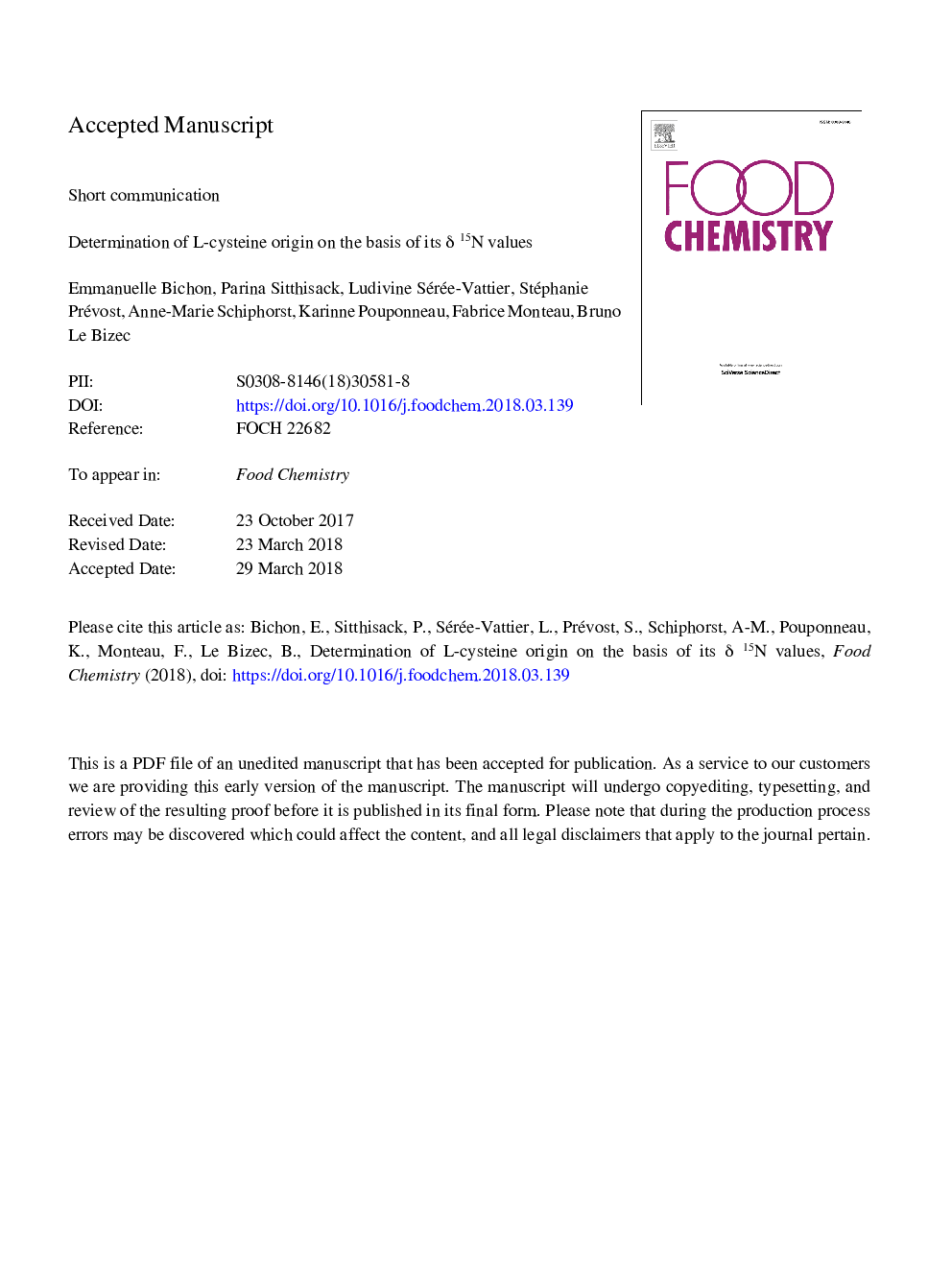| Article ID | Journal | Published Year | Pages | File Type |
|---|---|---|---|---|
| 7585071 | Food Chemistry | 2018 | 17 Pages |
Abstract
The majority of l-cysteine is obtained industrially by hydrolysis of animal materials, such as poultry feathers. Despite widespread belief, there is little evidence that human hair is used as a source material and its use is explicitly banned in the European Union (2000/63/EC decision). We developed an isotope ratio mass spectrometric (EA-IRMS) method to determine carbon and nitrogen isotopic ratio in cysteine preparations and related compounds, e.g. cystine and carbocysteine. A threshold relying on the 15N/14N was established to differentiate between hair and feathers; a value below 6.6â° indicates a poultry feathers origin. Global uncertainty of measurement was found to be 0.1â° for δ15N (sample size of 0.5-1.8â¯mg).
Related Topics
Physical Sciences and Engineering
Chemistry
Analytical Chemistry
Authors
Emmanuelle Bichon, Parina Sitthisack, Ludivine Sérée-Vattier, Stéphanie Prévost, Anne-Marie Schiphorst, Karinne Pouponneau, Fabrice Monteau, Bruno Le Bizec,
